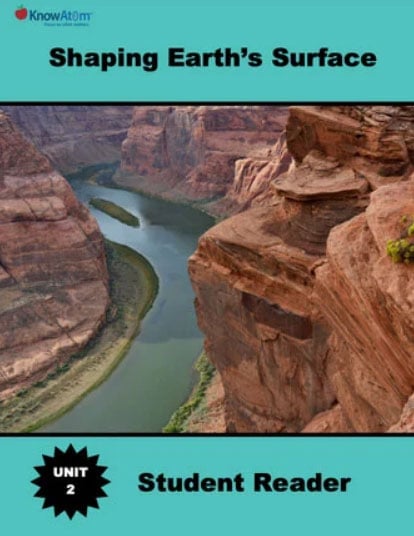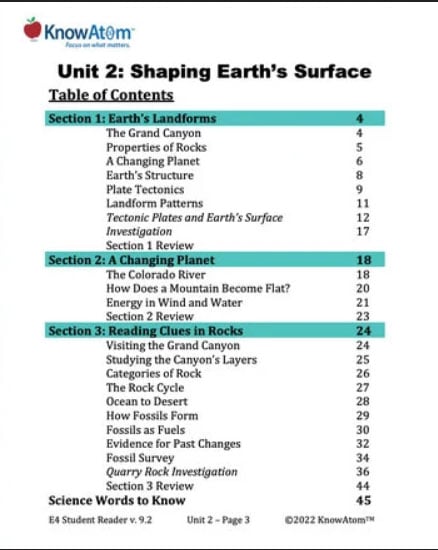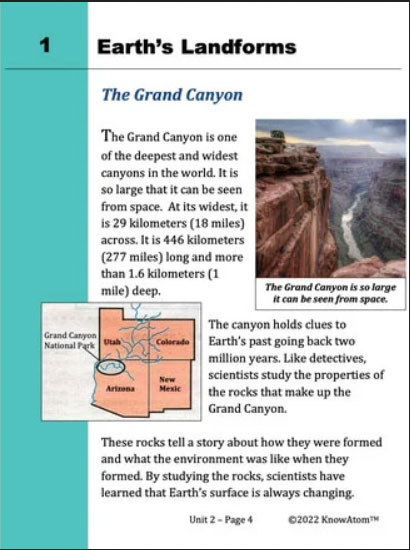Science background gives teachers more in-depth information on the phenomena students explore in this unit. Below is an excerpt from the science background section for this lesson on Earth’s changing surface.
Rocks do not remain the same forever. The matter that makes them up is cycled and transformed into different categories over time. The gradual transformation of one category of rock into another is called the rock cycle— the processes that form, break down, and re-form rock from one category to another. The processes that drive the rock cycle happen all the time and interchangeably. For example, wind and rain weather large rocks into small pieces of sediment. The pieces of sediment are eroded by the wind and rain to settle on the ground or in the lakes and oceans.
Metamorphic rock is formed in chemical reactions where one type of rock is changed by pressure or heat into a new type of rock with different properties. With time, metamorphic rock can be forced farther down into Earth. Heat from the hot mantle melts metamorphic rock into magma. The magma either cools slowly below Earth’s surface, or is released as lava through vents in the crust called volcanoes. The cooled lava hardens into igneous rock.
As rocks cycle from one form to another, they also capture snapshots of past life on Earth. The same processes that form sedimentary rock form fossils— the remains of ancient animals and plants, the traces or impressions of living things from past geologic ages, or the traces of their activities. Because of this, the fossils that are found in lower layers of rock are more ancient than fossils found in higher layers.
Fossils include bones, teeth, wood, and shells. Another kind of fossil, called a trace fossil, is an imprint or evidence of a living thing left behind in rock. The trace fossil may be of a footprint or the outline of an entire organism. Trace fossils help scientists understand how and where an animal rested, moved, or fed. Footprints, worm burrows, and insect nests are examples of trace fossils.
Some of the oldest fossils found in the Grand Canyon are 1,200 million years old, and many are marine fossils, formed when oceans covered the land. Fossils are not easy to make, so out of the billions of creatures that have lived on Earth, only a small number have turned into fossils. Scientists study fossils to learn more about Earth’s history. The fossil record includes all of the fossils that have ever been found, which scientists use to understand Earth’s history.
Over the years, scientists have discovered that the same types of fossils appeared in different geographic locations throughout the world. These findings provided scientists with strong evidence that the seven continents were once connected like puzzle pieces, forming one large “supercontinent” surrounded by a single ocean. This supercontinent, called Pangaea, existed between 300-200 million years ago. Because of plate tectonics, Pangaea slowly broke into the seven continents we know today.
The locations of certain fossils around the world also show how Earth has changed over millions of years. For example, fossils of tropical plants have been found in Antarctica, the coldest continent on Earth. This evidence suggests that Earth’s climate has changed dramatically over the years, and that Antarctica was probably much warmer than it is today.










